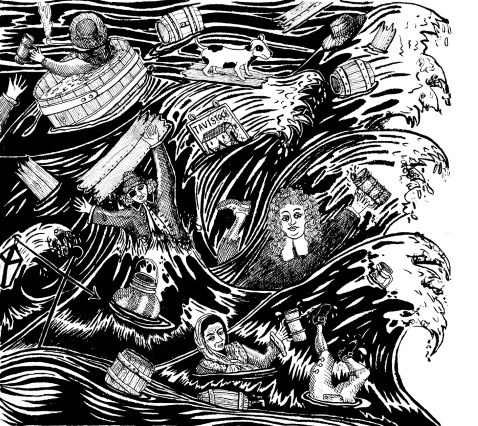It’s the 200th anniversary of the London Beer Flood of 1814

On Monday 17th October 1814, a terrible disaster claimed the lives of at least 8 people in St Giles, London. A bizarre industrial accident resulted in the release of a beer tsunami onto the streets around Tottenham Court Road.
The Horse Shoe Brewery stood at the corner of Great Russell Street and Tottenham Court Road. In 1810 the brewery, Meux and Company, had had a 22 foot high wooden fermentation tank installed on the premises. Held together with massive iron rings, this huge vat held the equivalent of over 3,500 barrels of brown porter ale, a beer not unlike stout.
On the afternoon of October 17th 1814 one of the iron rings around the tank snapped. About an hour later the whole tank ruptured, releasing the hot fermenting ale with such force that the back wall of the brewery collapsed. The force also blasted open several more vats, adding their contents to the flood which now burst forth onto the street. More than 320,000 gallons of beer were released into the area. This was St Giles Rookery, a densely populated London slum of cheap housing and tenements inhabited by the poor, the destitute, prostitutes and criminals.
The flood reached George Street and New Street within minutes, swamping them with a tide of alcohol. The 15 foot high wave of beer and debris inundated the basements of two houses, causing them to collapse. In one of the houses, Mary Banfield and her daughter Hannah were taking tea when the flood hit; both were killed.